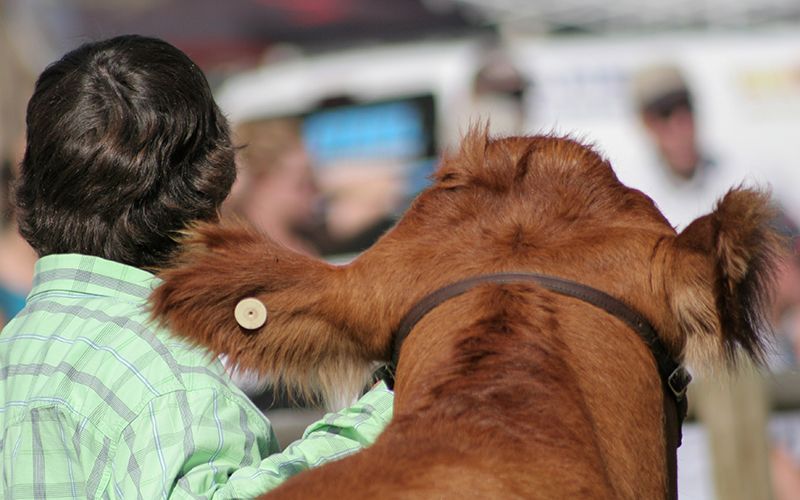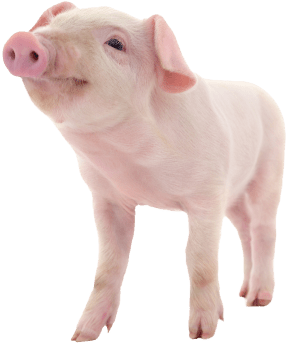
Stepping into the Ring: A Novice's Guide to Showing Cattle
|
|
Time to read 7 min
 You are being redirected to QC Supply Pharmacy, where you’ll find a wide selection of high-quality prescription and pharmaceutical products for animals of all sizes.
Enjoy the same great service and expertise you trust from QC Supply.
Click below to continue shopping.
Continue
No thanks, stay on the main site
Powered by
You are being redirected to QC Supply Pharmacy, where you’ll find a wide selection of high-quality prescription and pharmaceutical products for animals of all sizes.
Enjoy the same great service and expertise you trust from QC Supply.
Click below to continue shopping.
Continue
No thanks, stay on the main site
Powered by


|
|
Time to read 7 min
Preparing for and showing livestock can be an extremely rewarding and educational experience for young people. The lessons learned in showing cattle, steers and calves can directly inform their lives in positive ways. Responsibility, patience, good sportsmanship, good organization, confidence, respect for animals and people alike; the list of benefits is a long one. For those interested in the experience, knowing how to prepare the animal and demonstrate smart showmanship will be essential for success in the ring.
Setting Goals
Perhaps your goal is to win a champion ribbon. Nothing wrong with setting high goals; we all do it and having something to work toward can be a motivating factor that can lead to success. If you don’t win a champion ribbon the first time out, the next time you’ll groom a little finer, handle with a little more control and confidence. As the old cliché goes, it’s the journey, not the destination. If your goal is to win first place, well, that may not be totally in your control, at the end of the day. The lessons and skills learned as you work toward your goal will be invaluable.
After all, that champion ribbon will bring notice to your animal. Positive notice. It also will tell folks that you are a responsible, skilled, and serious handler who knows how to care for his animal and presents an attractive product that, well, wins ribbons. Recognition can lead to financial gain. What are your goals for the animal after the show season? To sell it? Or become a member of a replacement herd? Some farmers show cattle to showcase their herd genetics. A champion ribbon is a fine goal in and of itself. It may lead to other successes, as well.
Finding The Livestock Shows
Once you’ve put in the hard work of training your animal and perfecting your handling technique, the next step is to show the animal and display your skills. Shows are classified by age of the handler and the animal, and by the animal breed. There are several outlets you can use to find where the shows are in your area or even beyond if you’re committed enough to travel.
State and local fair exhibitors typically have a robust agriculture focus. Cattle associations are a great source to find out about local and national livestock show events. They’ll be able to point you in the right direction, as well, and give you additional information you’ll need about what classes you and your animal(s) are eligible to enter. Your local Chamber of Commerce or the extension service at the local college or university should also be able to provide you with a lot of good information. Other resources are local FFA and 4-H chapters if you’re not already involved.
Preparing for the Livestock Show
Halter Breaking
Halter breaking is all about patience and practice. Go slow and don’t rush the process. You never want to hit your animal. Your goal is to earn the animal’s trust and respect. You’re building a relationship with your animal and that takes time, plain and simple. Have a gentle, compassionate hand and be willing to devote time to the worthwhile effort of teaching your animal to respect the halter.
One way to build this trust is to be regular in your interactions with the animal. Develop a routine and stick with it. Soon the animal will know what to expect from you and will learn to respond accordingly. Don’t give up! No two animals are the same and some will be more stubborn than others. Be confident and consistent in your approach.
Teaching to Lead
It shouldn’t take much more than a week to teach your show stock to lead. Always stand on the left side of your animal and use gentle pressure to teach your animal to respond by slightly pulling on the halter. Never yank. Once the animal is moving, release the pressure.
Start small. Set attainable goals in terms of distance that you can meet and then increase. Don’t expect your animal to be led long distances immediately. Allow them the time necessary to become comfortable with your command and guidance before expecting them to perform at show levels.
Preparing for The Show Ring
A show stick is a very useful tool when teaching your animal how to present itself. To pose a calf or heifer, the front feet should be squarely aligned beneath the shoulders with the hind leg closest to the judge positioned slightly back. You don’t want your animal to be too stretched out. Rather, your animal should be balanced. Once you’re in the ring, you may need to reposition its feet as judges perform their inspections. Do it discreetly and gently.
Standard Preparation & Show Supplies
To maximize your chances of success in the ring, you’ll want your animal looking its best with daily care. Proper hoof care means keeping them trimmed. White spots should be bright and clean. The tail should be brushed and fluffy. The coat should be clipped, groomed, and looking the best you can get it. Clipping a show animal’s coat can be a complicated process. Be sure you’ve done your research and have had plenty of practice trimming and clipping before you get to the show. Before the start of the show season, make sure you’ve clipped your animal of its winter coat and begin training the animal’s topline hair. Then, a couple of days before the show, clip the animal for the final time taking particular care to get it looking exactly the way you want.
To make all this happen, you need a series of basic supplies including
The appearance of your animal will count. It makes sense to ask many questions and ask for the advice of folks who have shown animals in the past so you can get yours looking the way judges will expect it to appear. Many judges are looking for a fluffy coat. This can be to your advantage as a fluffy coat may hide or disguise your animal's physical imperfections. To achieve a fluffy coat, spend perhaps more time than you’d think necessary combing the animal. Doing so will create the appearance of a healthy animal, and it will tell the judges that you are a handler who knows the importance of making a positive impression.
The Importance of Proper Cattle Nutrition
Part of the impression you’ll create will be based on the fitness of your animal. You don’t want an overweight animal, but you also don’t want one that appears emaciated, like it’s been starved for the sake of the competition. Cattle supplements are a good idea.
The Basics of Showmanship
The animal is the star of the show, but you should look your best, be well-mannered, and be calmly confident at all times. If the show requires a dress code, you’ll want to find that out in advance of show day. If there is no dress code, a button-down shirt tucked in with a belt, hard-toed shoes, and a generally clean, combed appearance is standard.
Once in the ring, it’s time to be a showman and let everyone see the results of all the hard work you’ve done. The show ring should be big enough to allow everyone in the class adequate space, but that may not always be the case. Whenever possible, leave several feet between you and the handler in front of you. Don’t tailgate and don’t lag behind. Keep a steady pace consistent with the flow of everyone else. Do not pass the handler in front of you if they move too slowly or their animal is unruly. It is acceptable to give the animal in front of you a gentle tap on the thigh if they’ve come to a halt.
When you have the opportunity, make steady, confident eye contact with the judges. Even if you haven’t shown an animal before, try to appear like you have. Your calm confidence will be part of your overall presentation. Don’t be smug or overly confident in your appearance. Humility goes a long way.
With any luck, you’ll take home a ribbon, maybe even the top prize in your class. If you don’t happen to place this time, be thoughtful about what you can do next time to improve your performance. At the end of the day, the judge’s decision is the judge’s decision. The best you can do is the best you can do--that’s usually enough to impress just about anyone.
Recommended Supplies for Show Cattle
Here at QC, we carry a wide range of show cattle supplies. So, if you’re in the market, check out the following pages for the high-quality show products from the brands you trust like Sulivan Supply, Weaver Leather, and more!
If you have any questions or need some show-time advice, give us a call at 888-433-5275. Did you show livestock or have kids that do? Tell us your best show tips in the comments section!